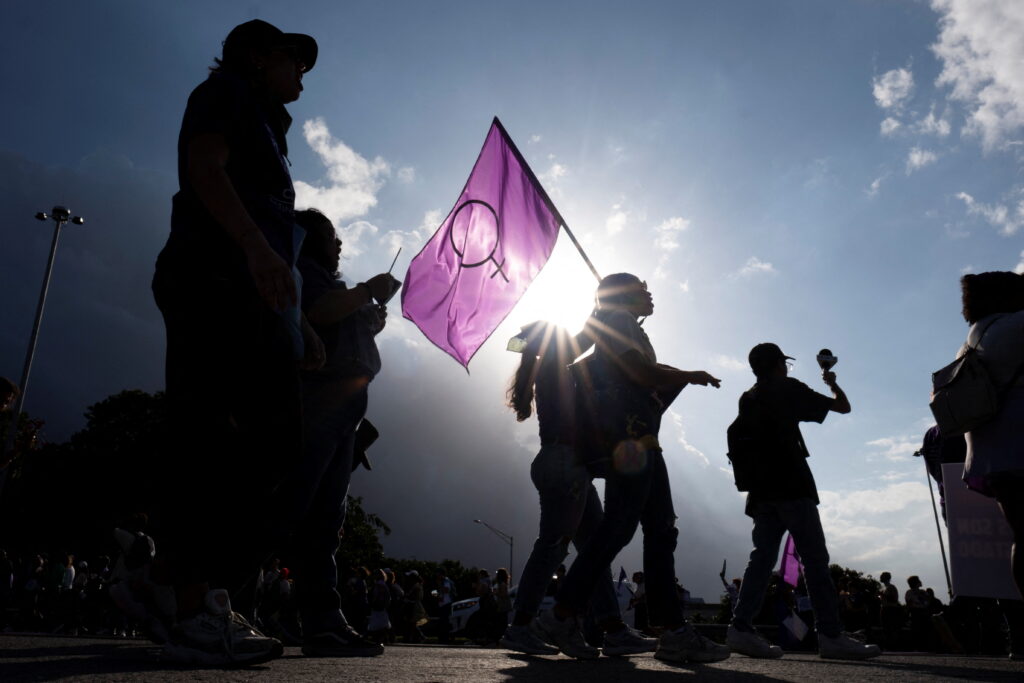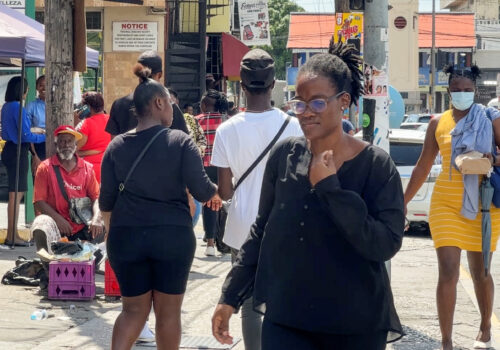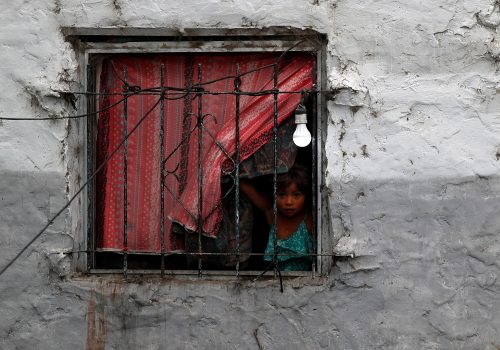The Caribbean is one of world’s most vulnerable regions to the effects of climate change. Hurricanes and strong tropical storms, changing precipitation patterns, and sea level rise disproportionately affect Caribbean economies and citizens—and none of the latter more than its women and girls. Climate change amplifies their existing challenges, such as gender-based violence and inequities, while creating new barriers to economic opportunity and political influence. As Caribbean governments and their partners work to build a more resilient region, the challenges facing women and girls need to be taken into account and policy designs must reflect their perspectives.
The region has an urgent need to prepare for the scope of climate change. Many of the region’s countries rely on tourism to drive economic growth, with ten of the world’s twenty most tourism-dependent economies residing in the Caribbean. When hurricanes roll through the region, damaging infrastructure and halting flights, the tourism industry halts as well, diminishing economic prospects. Most Caribbean countries face the brunt of the Atlantic hurricane season, which is producing stronger and more frequent tropical storms. At the same time, most of the region’s populous cities are coastal, making sea level rise a threat to homes and the day-to-day functions of society. Further, changing precipitation patterns and higher average temperatures result in agricultural degradation and more acidic oceans, decreasing crop yields in rural areas and limiting fishery supplies.
While the entire region faces daunting consequences from climate change and related natural disasters, women and girls face disproportionate effects across four areas.
First, women and girls are “especially vulnerable to sexual violence and coercion” in the wake of a natural disaster, according to the United Nations Population Fund. This risk includes and extends beyond domestic violence, which is known to spike in crisis situations, such as during the COVID-19 pandemic in Trinidad and Tobago. Disproportionate risks mount, the World Bank notes, “in the face of uprooted housing and traditional support structures, disrupted access to services, and both structural and social obstacles to accessing food, relief, supplies, and latrines.” A lack of privacy and security in shelters is problematic, especially for young and teenage girls.
Second, women are responsible for a greater share of caregiving for families and households. After Hurricane María knocked out the power grid in Puerto Rico and made potable water scarce, it was women who bore a greater burden in doing the cooking, laundry, and cleaning to keep households going. Moreover, across multiple climate change events, when schools close, women with school-age children are often unable to return to work or attend school themselves.
Third, Caribbean women tend to work in the informal economy, including small-scale businesses and the hospitality sector, both of which are adversely affected by tropical storms. Storms can damage crops and roads, making it difficult to get produce to markets, while also leaving restaurants, shops, and hotels closed for days, affecting incomes.
Finally, women often have unequal access to finance, capital, and other assets, which can affect their resilience after a disaster. In addition, as governments finance the reconstruction of damaged infrastructure after natural disasters and fortify existing structures, there are fewer resources devoted to the education and health sectors—both of which are integral to providing care to and lifting family responsibility burdens from women.
Caribbean governments and regional partners must factor in the disproportionate challenges facing women and girls at the earliest stages of climate resilience and adaptation policymaking. Policy designs should incorporate government funding or subsidies dedicated to women-owned businesses adversely affected by climate change. Historically, Caribbean women face barriers to accessing finance and capital to start or invest in their businesses. Limited track records in operating a business relative to men and frequent climate events increase the risk profiles for women-owned firms. Here, governments can work with regional institutions like the Caribbean Development Bank to level the playing field for women-owned firms by providing grants to businesses in climate-affected sectors, like hospitality and agricultural work.
Further, resources can and should be dedicated to women-owned firms that are physically affected by climate events and to create shelters where at-risk women and girls can stay after natural disasters to limit spaces where gender-based violence can occur. This should include shelters that can care for children and allow working parents to return to their jobs to offset the disproportionate costs borne by women resulting from family responsibilities.
Involving women in policy designs also includes making them part of the decision-making process. Only women and girls can provide first-hand information to contextualize policies and streamline resources that address the unique challenges they face due to climate change. One way to do this is to incorporate perspectives from gender-focused civil society organizations.
Civil society organizations are uniquely intertwined with the realities of each country at national and subnational levels, allowing them to understand the day-to-day challenges facing women and girls across different communities. Governments can work with civil society organizations to ensure that policies are not blanket approaches but are bottom-up in nature, so that each community of women and girls receive the resources and attention they require. Regular consultation with these groups, particularly in the advent of hurricane season, during rainy seasons, and in the lead-up to drier months can provide real-time insights into the types of government resources that should be devoted to women and girls.
Given that the Caribbean is a heterogeneous region, with different climate events affecting different countries, it is essential for policy design and decision making to be country-specific as well as gender inclusive to best serve local populations. Climate change does not have to result in increasing gender inequity in the Caribbean—as long as the voices and interests of women and girls are incorporated in policy design and resource allocation in regional planning to combat climate change.
Wazim Mowla is the associate director and fellow for the Caribbean Initiative at the Atlantic Council’s Adrienne Arsht Latin America Center.
This article is part of the Adrienne Arsht Latin America Center’s partnership with the UN Women Multi-Country Office–Caribbean.
Further reading
Fri, Mar 29, 2024
Gender equality can drive economic development in the Caribbean
New Atlanticist By Wazim Mowla
What would development in the Caribbean look like if every bit of the population’s potential was realized?
Thu, Mar 7, 2024
Not without her: A roadmap for gender equality and Caribbean prosperity
Report By Wazim Mowla, Valentina Sader
Caribbean development is intrinsically linked with women's equality. After a multi-month consultation process with Caribbean stakeholders, we offer a roadmap on how to achieve inclusive development in the region.
Wed, Mar 29, 2023
What policymakers should know about improving gender equality in Latin America and the Caribbean
New Atlanticist By
Narrowing the gender gap is pivotal for charting a more prosperous future for the region. Five experts on the region provide their ideas for doing so.
Image: People take part in a march to mark International Women's Day, in San Juan, Puerto Rico, March 8, 2024. REUTERS/Ricardo Arduengo



